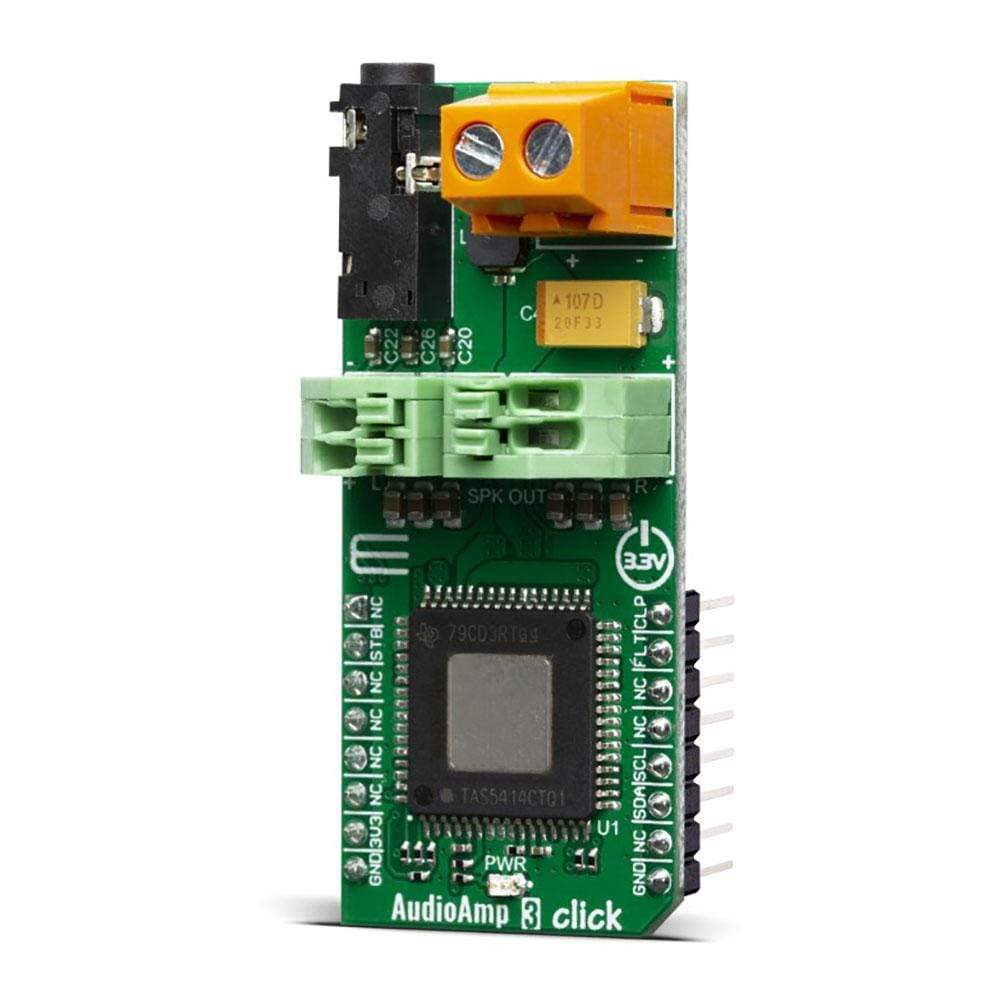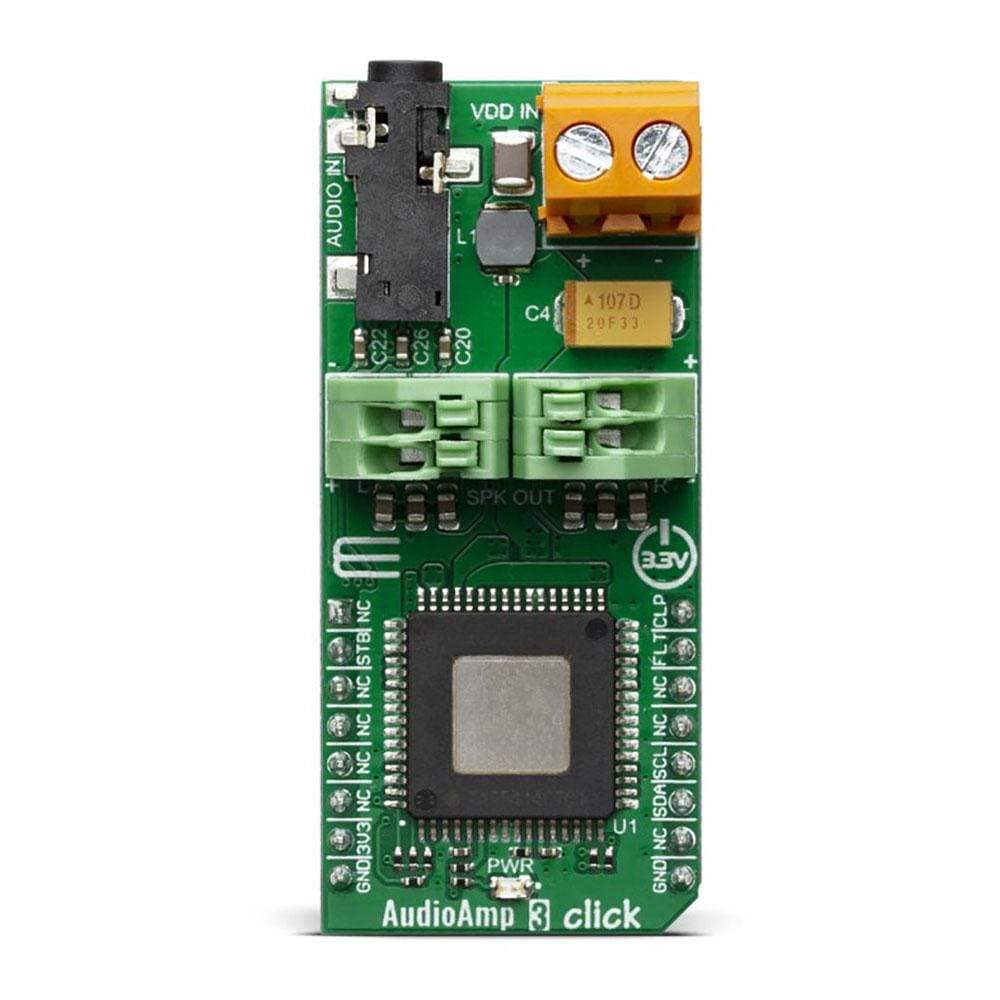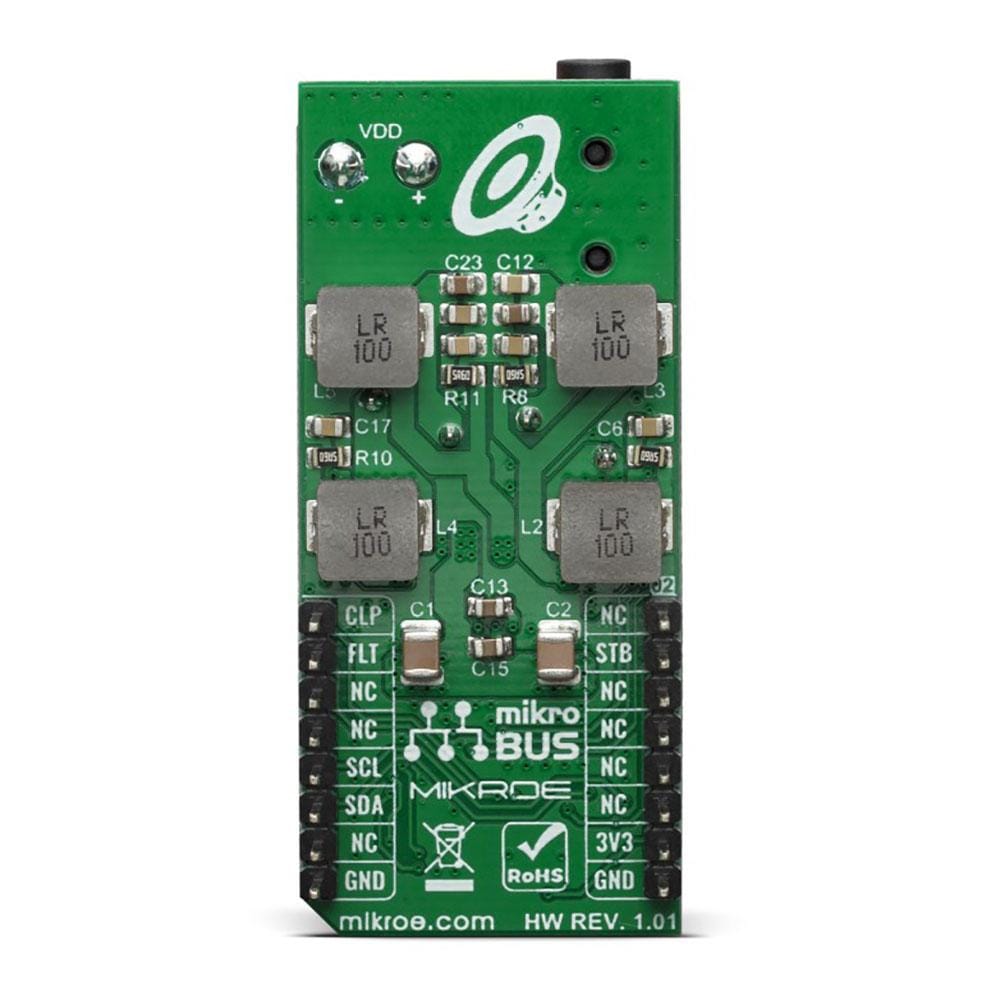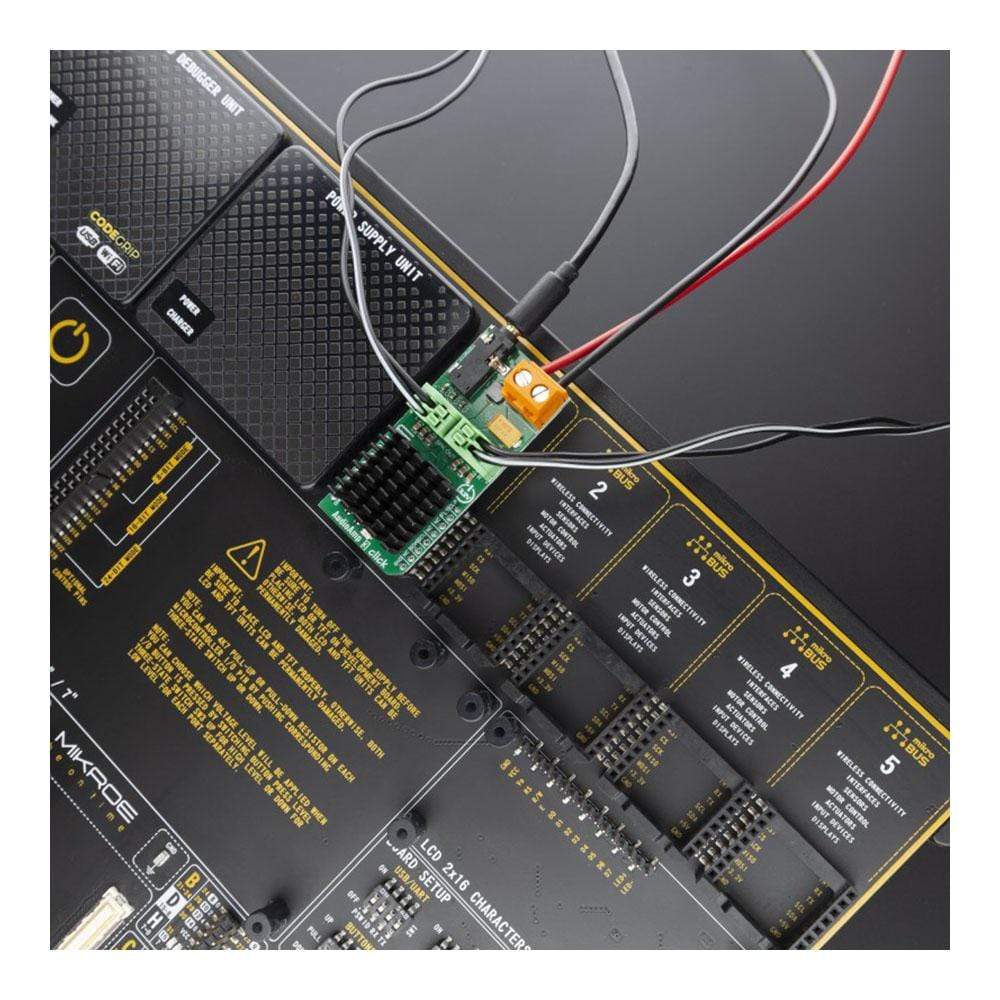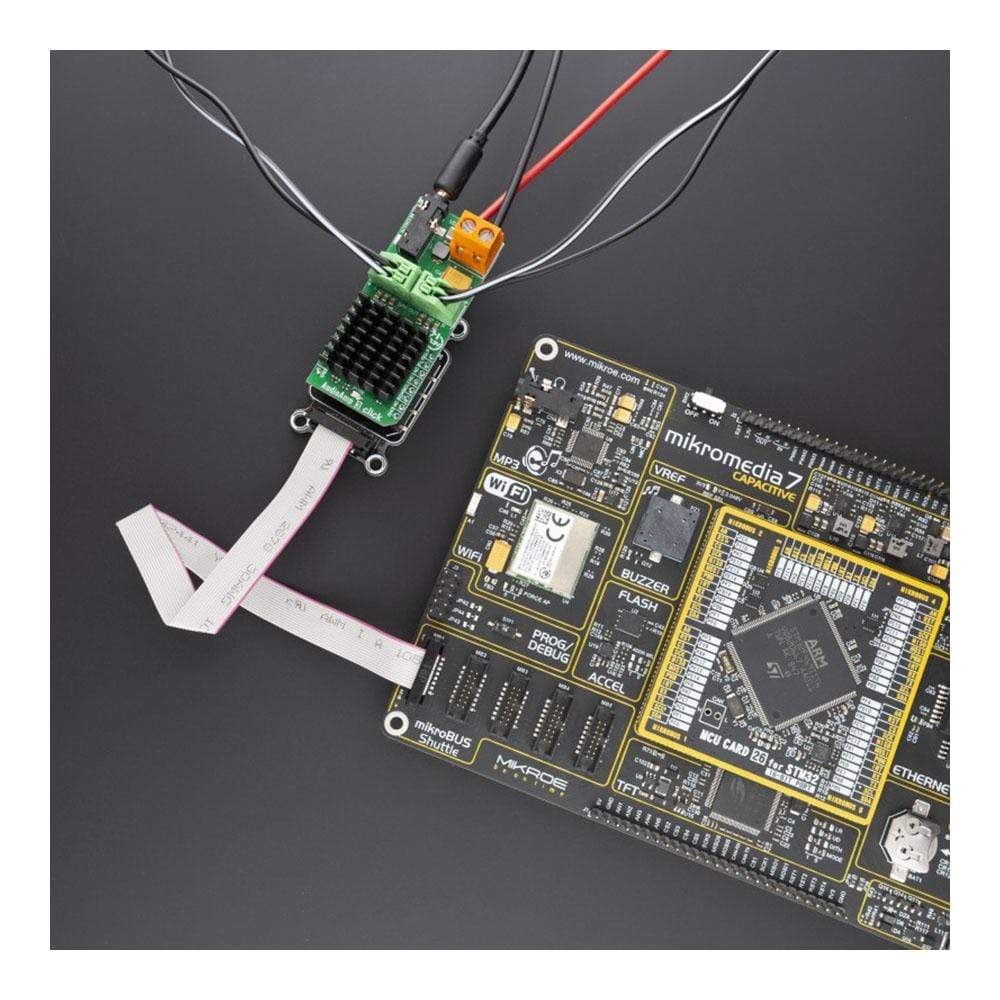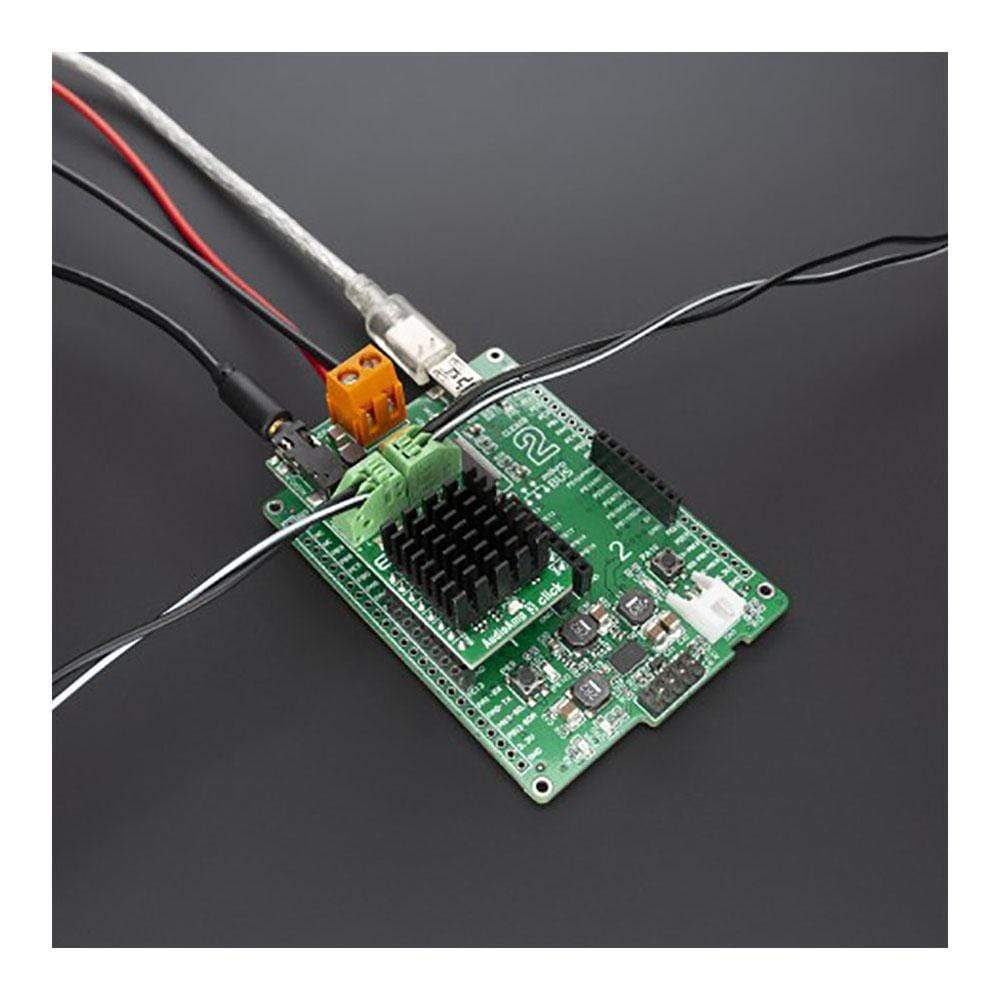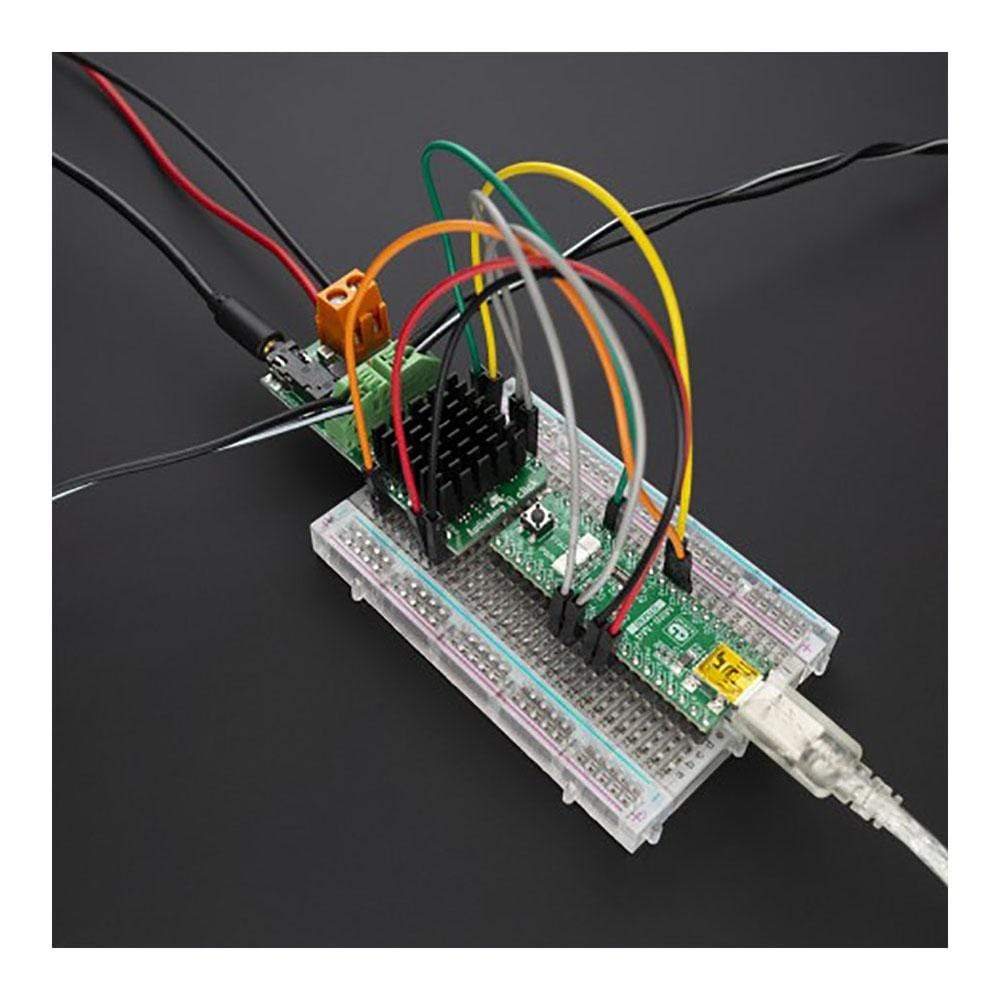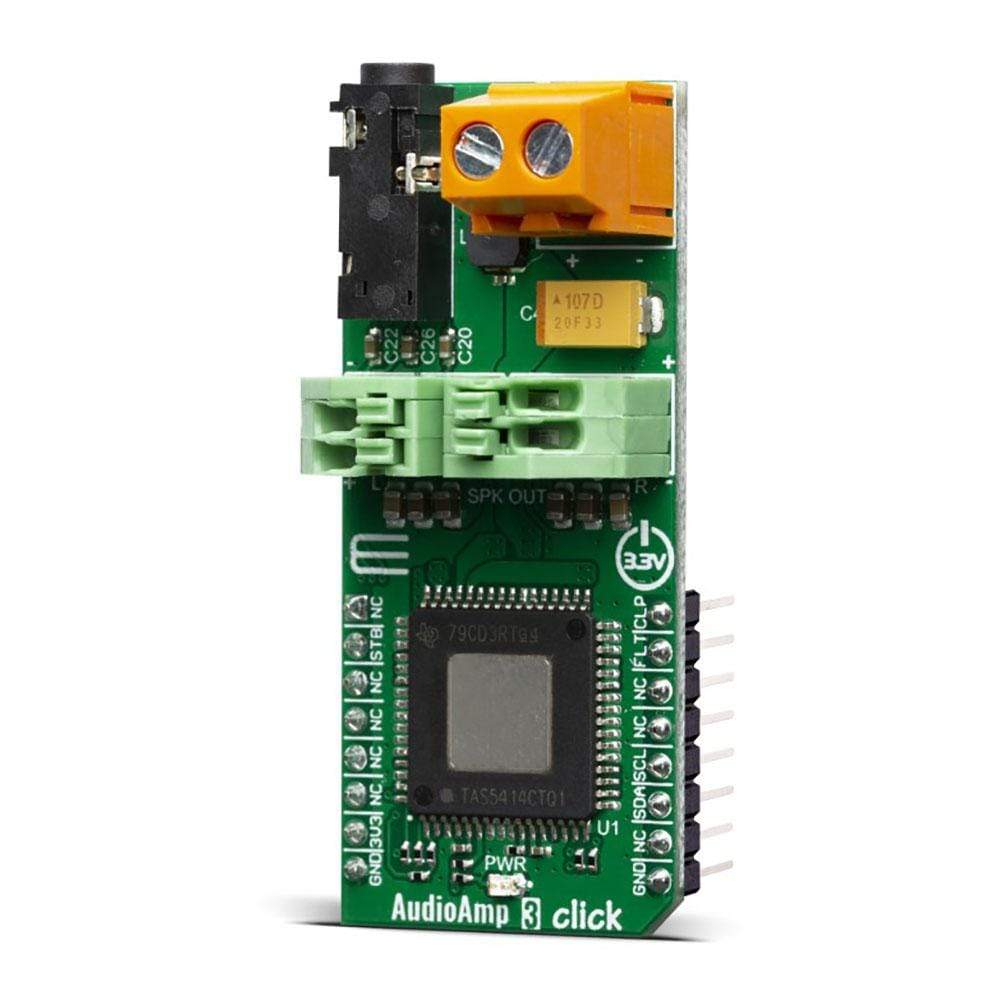
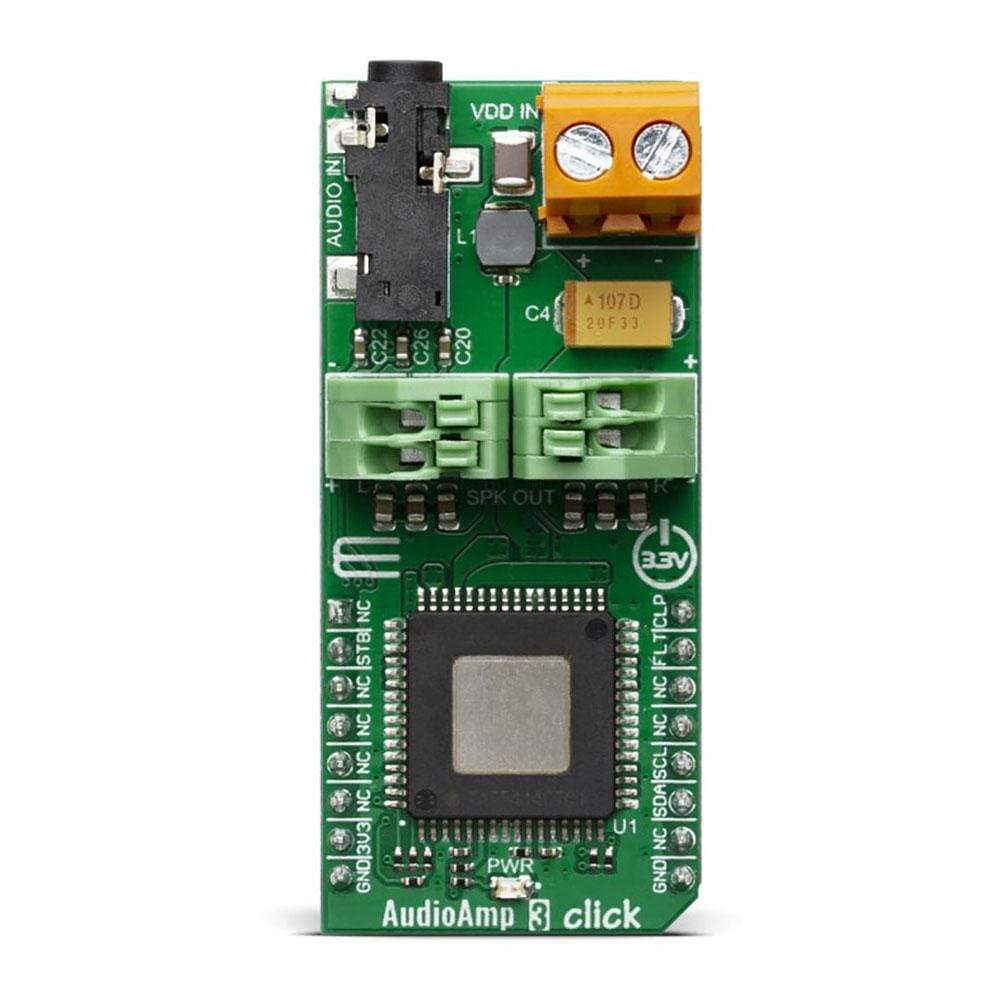
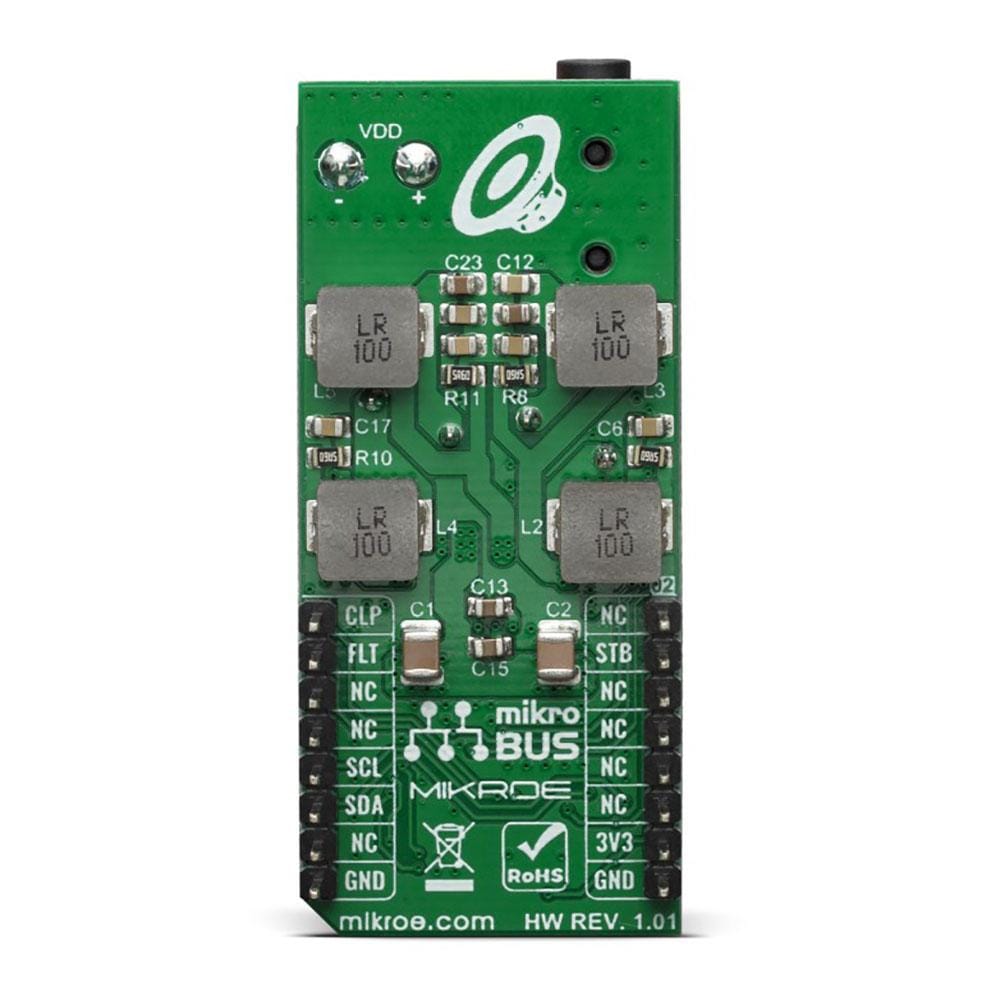
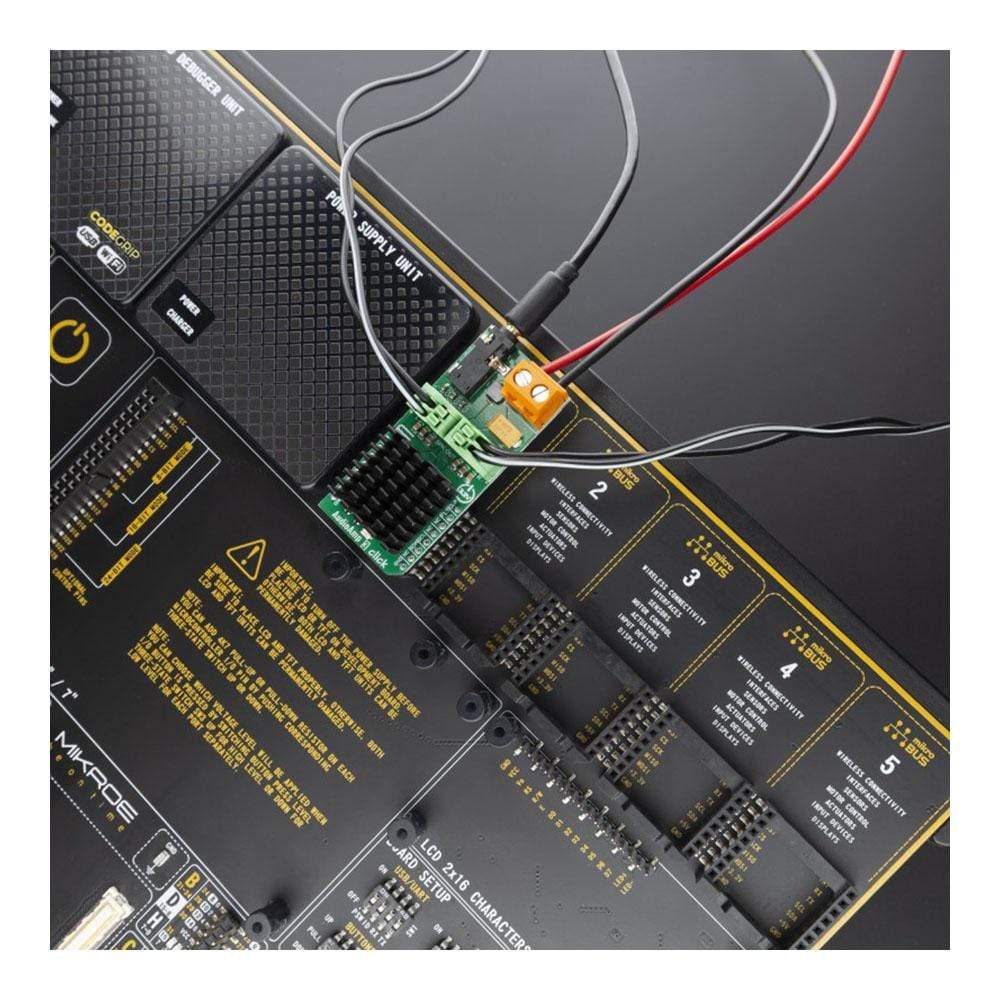
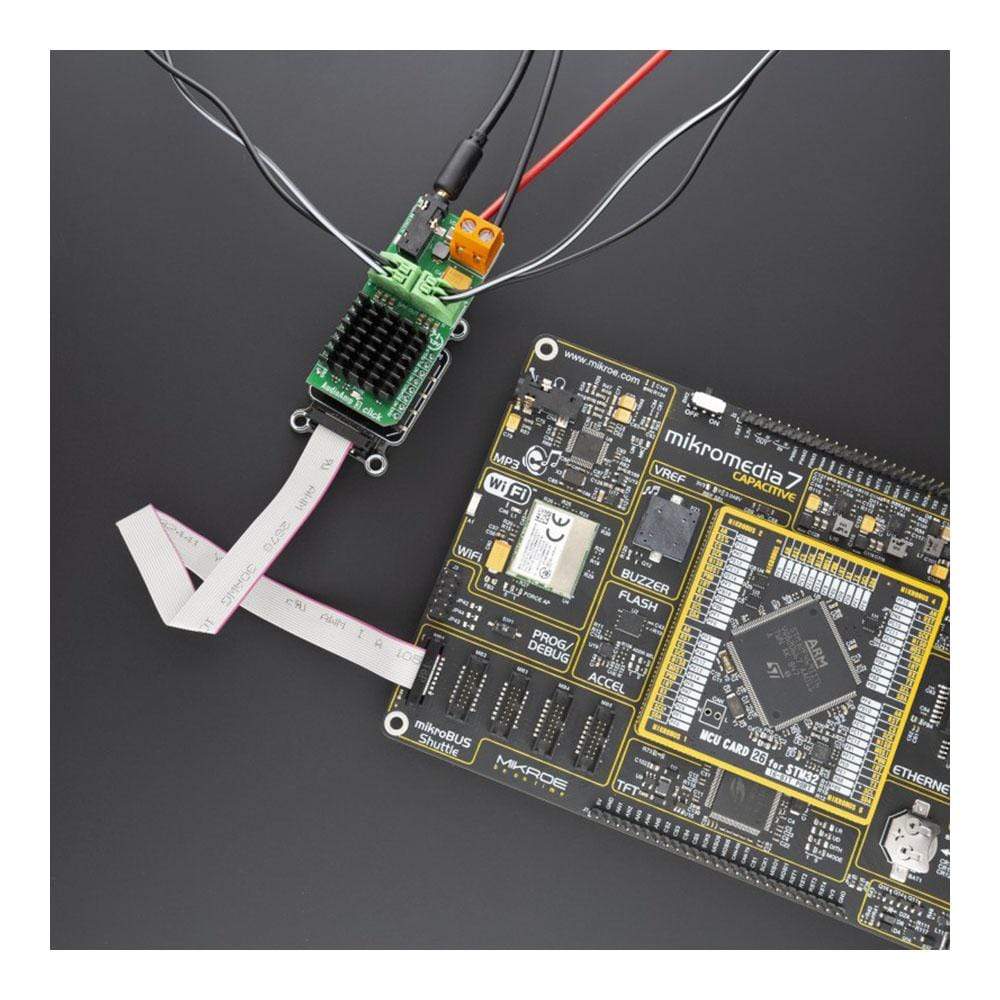
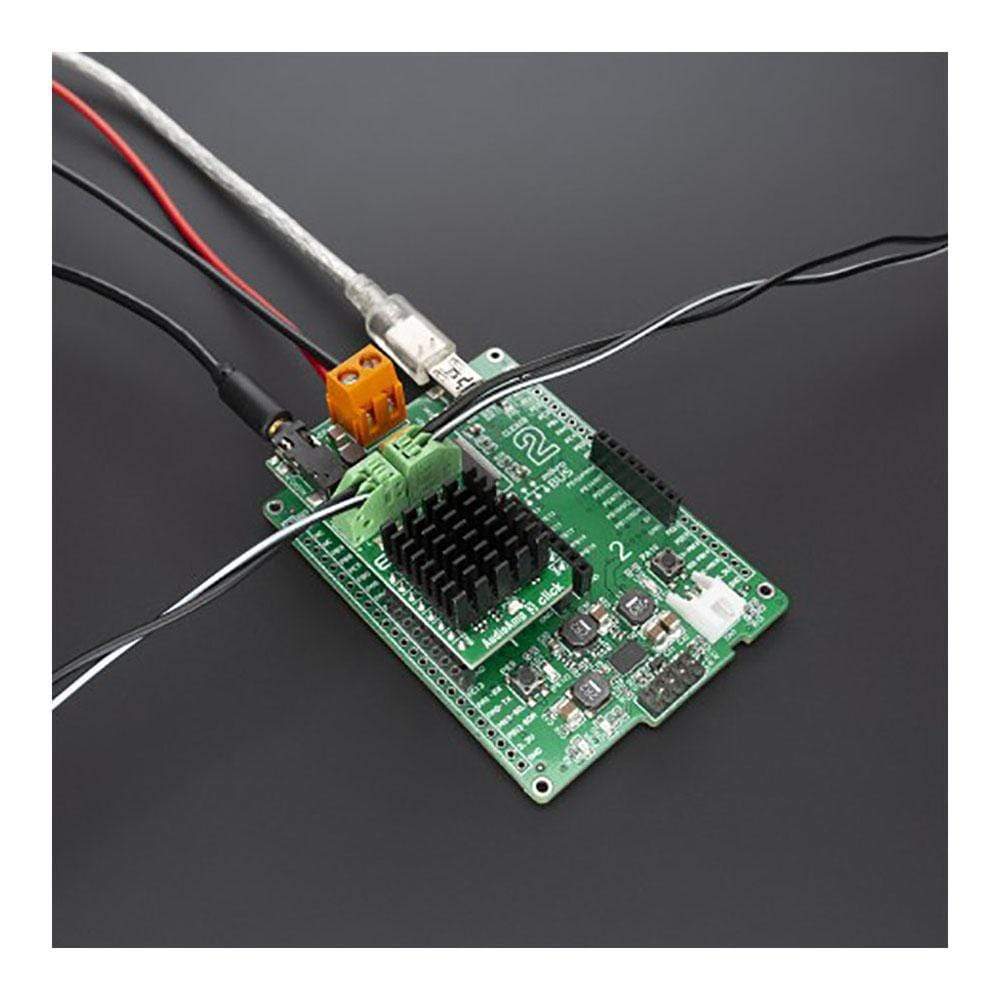
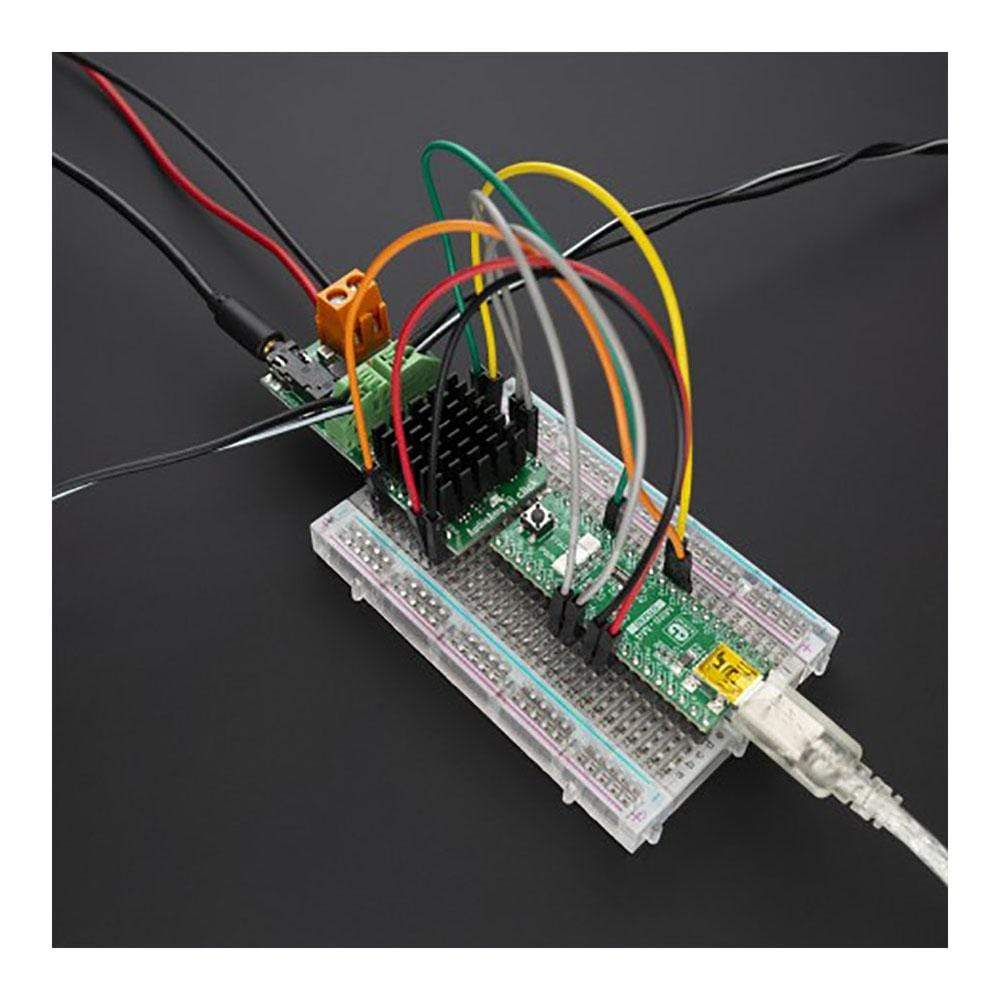
Key Features
Overview
The AudioAmp 3 Click Board™ is a stereo audio amplifier, capable of delivering up to 79W per channel with the 4Ω load. It is based on the TAS5414, a class-D integrated amplifier, which utilises a highly efficient switching scheme. Advanced EMI Suppression with Spread Spectrum Control allows using ferrite bead filters instead of bulky inductors, still maintaining the required EMC levels. The TAS5414 IC is equipped with a set of protection features, allowing a reliable operation.
Downloads
Das AudioAmp 3 Click Board™ ist ein Stereo-Audioverstärker, der bei 4 Ω Last bis zu 79 W pro Kanal liefern kann. Es basiert auf dem TAS5414, einem integrierten Verstärker der Klasse D, der ein hocheffizientes Schaltschema verwendet. Erweiterte EMI-Unterdrückung mit Spread Spectrum Control ermöglicht die Verwendung von Ferritperlenfiltern anstelle sperriger Induktoren, wobei die erforderlichen EMV-Werte beibehalten werden. Der TAS5414 IC ist mit einer Reihe von Schutzfunktionen ausgestattet, die einen zuverlässigen Betrieb ermöglichen.
| General Information | |
|---|---|
Part Number (SKU) |
MIKROE-3901
|
Manufacturer |
|
| Physical and Mechanical | |
Weight |
0.03 kg
|
| Other | |
Country of Origin |
|
HS Code Customs Tariff code
|
|
EAN |
8606018719204
|
Warranty |
|
Frequently Asked Questions
Have a Question?
Be the first to ask a question about this.

